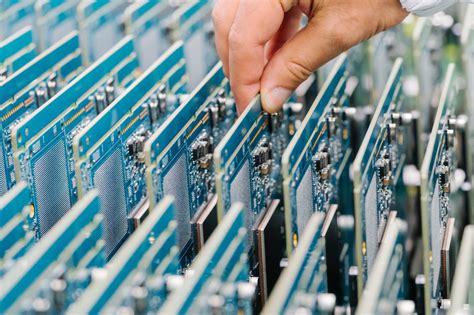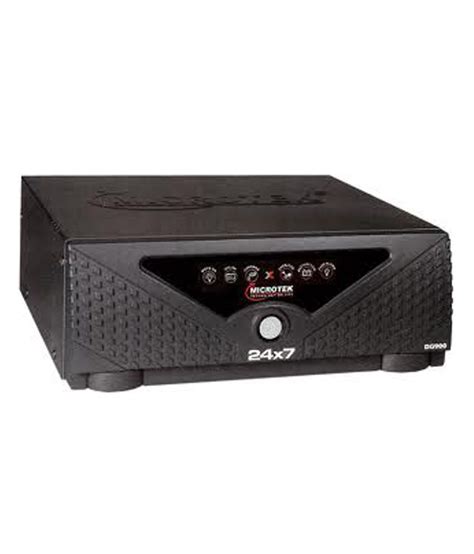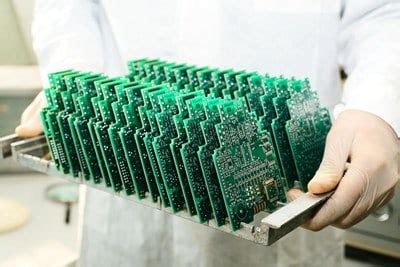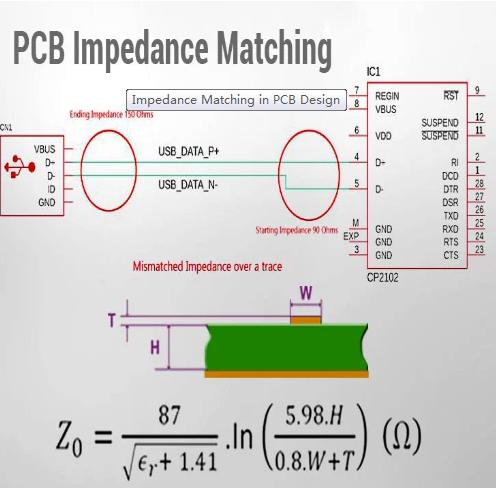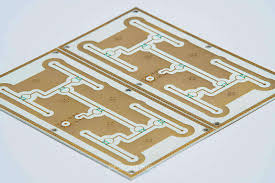Mastering Circuits Assembly: Essentials for Modern Electronics
Key Takeaways
Understanding the intricacies of pcb assembly is crucial for anyone venturing into the world of electronics. At its core, pcba involves the meticulous combination of various electronic components onto a printed circuit board, creating a functioning circuit. Grasping the basics of this process sets the foundation for success. Essential tools such as soldering irons, multimeters, and oscilloscopes are indispensable in achieving precision and reliability in assembly. Furthermore, adopting effective design and layout techniques can significantly enhance performance. Proper soldering methods and strategic component placement are vital best practices that ensure durability and functionality. When facing challenges, familiarity with common troubleshooting steps can save time and resources. Lastly, optimizing circuit performance through experimentation with different configurations and values can lead to innovative solutions in electronic design. As technology evolves, embracing advanced techniques will be essential for staying competitive in the field of circuits assembly.
Introduction to Circuits Assembly: Understanding the Basics
In the realm of modern electronics, understanding circuits assembly is fundamental to successfully creating and optimizing various electronic devices. PCB assembly, often referred to as PCBA, encompasses a wide range of processes that bring electronic designs to life. At its core, circuits assembly involves the meticulous process of placing components on a printed circuit board (PCB) and ensuring proper connections through soldering. To dive deeper into this intricate field, one should recognize that not all circuits are designed equally; each project calls for specific approaches tailored to its functional requirements.
In addition, familiarity with essential tools such as soldering irons, magnifying glasses, and multimeters can significantly enhance one’s ability to assemble circuits effectively. > “Investing in quality tools is crucial for achieving precise results in circuits assembly.” This phrase captures the essence of striving for excellence when working on electronic projects. Moreover, developing a solid foundation in circuit design principles will help individuals identify optimal layouts that minimize interference and maximize performance.
In exploring these concepts, you’ll not only grasp the technical aspects but also appreciate the critical importance of each phase in the overall PCBA process. Mastery of these components allows for an effective merge of theory and practical application, paving the way for innovation within electronics and ensuring that designs transition seamlessly from idea to reality. Understanding these essential tenets sets the stage for success in more advanced topics such as troubleshooting common issues and optimizing performance.
Essential Tools and Equipment for Circuit Assembly
When embarking on the journey of circuit assembly, having the right tools and equipment is crucial for achieving success in your projects. Understanding the function of each tool is essential. For instance, a soldering iron is a must-have for connecting components onto printed circuit boards (PCB) in a process known as PCB assembly (PCBA). Along with this, a quality multimeter is invaluable for diagnosing circuit issues by measuring voltage, current, and resistance. Furthermore, specialized tools like tweezers and wire strippers contribute to efficient component handling and preparation.
In addition to hand tools, investing in a reliable workbench equipped with adequate lighting can greatly enhance the assembly process’s overall efficiency. A good magnifying lamp or microscope may also be beneficial for inspecting tiny components or solder joints which are often overlooked by the naked eye. Moreover, utilizing anti-static mats helps protect sensitive electronic components from static damage during assembly.
Lastly, software tools cannot be ignored in modern PCBA practices. Programs designed for electronic design automation (EDA) can assist in planning layouts and simulating circuits before physical assembly begins. By integrating technology with traditional techniques, you can optimize both your workflow and output quality in circuit assembly projects. Taking time to gather these essential tools and equipment sets a solid foundation for successful electronic design and production.
Techniques for Effective Circuit Design and Layout
Designing and laying out circuits requires a blend of creativity, technical knowledge, and an understanding of best practices in pcb assembly. One of the fundamental principles is to create a well-structured schematic that accurately represents the intended functionality of the circuit. This begins with selecting the appropriate components, which should be marked clearly on the schematic to avoid confusion later on. Once the schematic is complete, transitioning to pcba involves translating that design into a physical layout.
It’s essential to consider factors such as trace width, clearance, and overall board dimensions during layout. Keeping traces as short as possible minimizes resistance and potential noise interference, which is crucial for high-frequency applications. Additionally, strategically placing components can help manage thermal performance by clustering heat-generating elements away from sensitive components.
Another critical aspect is grounding; using a solid ground plane can significantly enhance signal integrity by reducing electromagnetic interference (EMI). When designing your layout, adopting techniques such as “star grounding” promotes a cleaner return path for signals. Furthermore, maintaining an organized layout not only aids in troubleshooting but also enhances production efficiency during pcb assembly. By integrating these techniques into your design process, you ensure the creation of optimized, reliable circuits that perform effectively in diverse electronic applications.
Best Practices for Soldering and Component Placement
When it comes to successful pcb assembly, mastering the techniques of soldering and component placement is crucial. Proper pcba starts with careful planning of your layout to minimize errors and ensure a smooth workflow. One of the best practices involves keeping components organized and accessible; this reduces the chances of misplaced parts during assembly. Furthermore, maintaining a clean workspace is essential, as it helps to avoid contamination which can lead to circuit failures.
When soldering, it’s important to use the right amount of solder—too much can create shorts, while too little might result in weak connections. For optimal results, consider using a soldering iron with adjustable temperature settings; this allows you to adapt to different component types without causing damage. Additionally, employing techniques such as the “tinning” method can enhance the quality of your joints by allowing molten solder to flow more easily onto both the wire and the pad.
Placement accuracy plays a vital role in circuit performance. Ensure components are aligned correctly according to your schematic; using specialized tools like anti-static tweezers can facilitate precision handling. After placement, inspecting the layout visually or with electronic inspection tools helps catch potential issues before moving on to soldering.
Lastly, remember that practice makes perfect—regularly refining your skills will lead you toward mastering these essential techniques in pcb assembly and ensure successful project outcomes.
Troubleshooting Common Circuit Assembly Issues
When engaging in pcb assembly, various challenges may arise that can impede the assembly process. Common issues include misalignment of components, poor solder joints, and even component failures. To effectively troubleshoot these problems, one must develop a systematic approach. Start by inspecting the pcba for visual defects—ensure that all components are correctly oriented and firmly seated on the board. If you observe irregular solder joints, reflow the solder using appropriate heat techniques to achieve better connections.
Furthermore, utilizing a multimeter can aid in diagnosing connectivity issues by checking for open circuits or short circuits that may not be visually evident. Re-examining the circuit layout is also crucial; discrepancies between your schematic and physical pcb assembly can lead to functionality problems. Always ensure that your soldering techniques are precise—too much solder can cause bridges between pads, while too little may result in weak connections.
For instance, while inspecting your pcba, if you find an overheating component during operation, it may indicate incorrect values being used for resistors or capacitors; thus, revisiting component specifications is essential. Lastly, maintaining an organized workspace helps mitigate distractions and errors during assembly. Emphasizing attention to detail when troubleshooting ensures a smoother process and enhances overall circuit performance.
Optimizing Circuit Performance: Tips and Strategies
Achieving optimal performance in pcb assembly requires a strategic approach to both design and manufacturing processes. One essential tip is to ensure proper component placement. Components should be arranged in a manner that minimizes signal interference and facilitates efficient connections. Additionally, understanding the layout can significantly affect the performance; placing high-frequency components farther apart from sensitive areas reduces unwanted crosstalk.
When it comes to PCB designs, employing via stitching can enhance signal integrity by offering multiple paths for returning currents. This technique helps in maintaining a balanced plane, thus optimizing overall performance. Moreover, using ground planes effectively can significantly lower noise levels, leading to a more stable circuit.
Key Strategies for Optimization
| Strategy | Description |
|---|---|
| Component Selection | Choose components that are rated for your circuit’s specific voltage and current requirements. |
| Thermal Management | Incorporate heat sinks or thermal vias to manage component temperatures effectively. |
| Signal Integrity | Use matched impedance routing for high-speed signals to maintain integrity across the circuit. |
In terms of testing, conducting design reviews and simulations before production can uncover potential issues that may impact performance later on in the process. This practice not only saves time but also reduces costs associated with rework during or after the pcba manufacturing phase.
By integrating these practices, one can effectively enhance the quality of circuit assembly while ensuring durability and reliability in electronic devices. Understanding these strategies will empower designers and engineers to produce superior electronic products that meet modern standards.
Advanced Techniques in Circuits Assembly
When venturing into advanced techniques in circuits assembly, it is essential to build upon the foundational skills in pcb assembly and pcba processes. One key aspect is the mastery of through-hole and surface-mount technology, which are crucial for creating efficient layouts. Utilizing advanced soldering methods, such as reflow soldering, can significantly enhance connections and reliability. Additionally, exploring automated assembly techniques can streamline the production process, ensuring precision and consistency across multiple boards. Advanced tools like pick-and-place machines and automated inspection systems help maintain a high quality of work while reducing human error. Furthermore, thermal management techniques, including the use of heat sinks and adequate ventilation, are vital for maintaining optimal circuit performance. In mastering these advanced techniques, engineers can greatly improve the functionality and reliability of their electronic circuits while paving the way for innovative designs in the ever-evolving landscape of electronics.
Conclusion: The Future of Electronics and Circuits Assembly
The landscape of pcb assembly and pcba is rapidly evolving, driven by advances in technology and increasing consumer demands for more sophisticated electronic devices. As we look to the future, the integration of automated systems and machine learning into circuits assembly processes will likely enhance accuracy and efficiency. Additionally, the shift toward sustainable practices in electronics manufacturing is becoming paramount. Innovations in materials and techniques will not only improve performance but also minimize environmental impact, setting a new standard for the industry. Continuous education in circuits assembly essentials is crucial as emerging trends such as flexible electronics and IoT applications redefine what is possible within the field. As professionals become more adept at employing these advanced methodologies, we can anticipate a future where pcba processes are not just about assembling components but about crafting intelligent systems that are responsive to an ever-changing technological landscape. Embracing these innovations will ensure that engineers remain at the forefront of electronic development, making significant contributions to both industry standards and consumer experiences.
Conclusion: The Future of Electronics and Circuits Assembly
As we step into a new era of technological advancements, the significance of pcb assembly and its nuances cannot be overstated. The evolution of pcba techniques has enhanced the efficiency and reliability of electronic devices, paving the way for innovations in various industries. The integration of advanced materials and methodologies in circuits assembly will not only facilitate the development of more intricate designs but also ensure optimal performance in increasingly compact configurations. Moreover, as industries embrace automation, understanding best practices in circuits assembly will remain crucial for engineers and technicians alike. By honing skills in the fundamentals outlined throughout this article, enthusiasts and professionals can adapt to emerging trends while pushing the boundaries of what’s possible in electronics. Ultimately, staying informed about current innovations and mastering foundational techniques will empower individuals to contribute meaningfully to the future landscape of electronics and circuits assembly.
FAQs
What is PCB assembly?
PCB assembly, or pcba, is the process of assembling electronic components onto a printed circuit board (PCB). This process includes soldering components like resistors, capacitors, and ICs to create a functional electronic circuit.
Why is effective circuit assembly important?
Effective circuit assembly is crucial because it ensures the reliability and performance of electronic devices. Poor assembly can lead to malfunctions, affecting the end product’s functionality.
What tools are needed for PCB assembly?
Essential tools for pcb assembly include soldering irons, multimeters, PCB holders, and inspection microscopes. Each tool plays a significant role in ensuring accurate component placement and secure connections.
How can I troubleshoot common PCB assembly issues?
Common issues include cold solder joints and misplaced components. To troubleshoot, visually inspect the board for any obvious mistakes, use a multimeter to check continuity, and re-solder connections as needed.
What are best practices for optimizing circuit performance?
Best practices include proper layout design to minimize interference, ensuring adequate grounding, and using high-quality components. These strategies help enhance the overall performance of your pcba projects.

